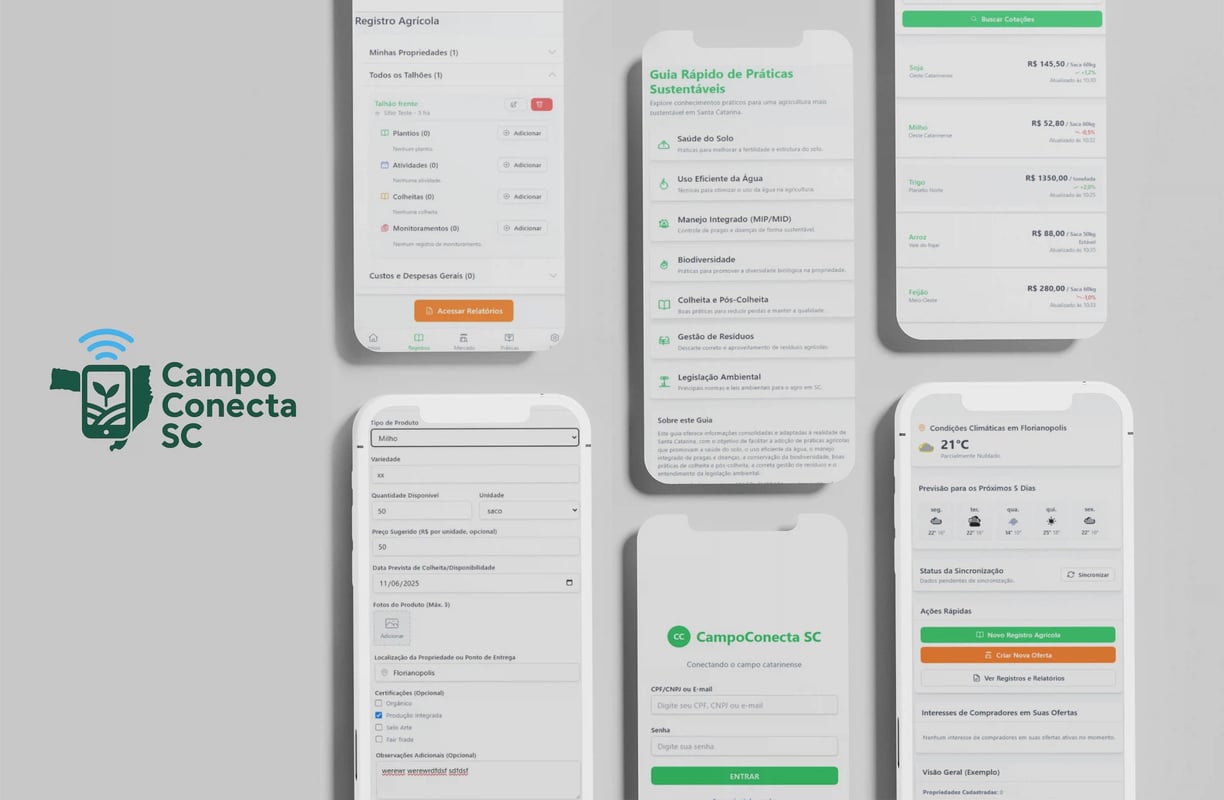CampoConecta SC: From Idea to MVP with Design Thinking
The CampoConecta SC project was conceived to address critical challenges that directly impact the livelihood and progress of family farmers in Santa Catarina. Issues such as restricted and asymmetrical access to market information, complexities in farm management, and the persistent connectivity barrier in rural areas were identified as central pain points.
The strategic objective of the MVP (Minimum Viable Product) was to develop a mobile digital solution that was not only intuitive and robust but also delivered immediate and tangible value. The goal was to empower these farmers with tools to optimize their operations, make more informed decisions, and consequently, foster a sustainable increase in their profitability and in the sustainability of their farming practices.
The Transformative Potential of UX in Agriculture.
The Guiding Methodology
This project was structured and guided by the Design Thinking methodology. It is crucial to recognize the non-linear nature of this methodology, where phases can be revisited as needed to refine both understanding and solutions.
In a sector like agribusiness, which can involve high costs for technology investment and face resistance to traditional practices, the iterative nature of Design Thinking and its focus on early user feedback act as a significant strategy to mitigate risks.
Research and Discovery: The Family Farmer in Santa Catarina
The first step of the project was to conduct an initial survey. This research provided a robust profile of family farmers in the Southern region of Brazil, with specific details for Santa Catarina.
We identified that farmers in Santa Catarina generally operate on relatively small properties, with an average of approximately 19.64 hectares. There is a significant dependence on family labor, with an average of 2.71 man-work units (Uth) per establishment in Santa Catarina.
This initial survey was crucial for guiding and structuring the project. After a detailed survey, based on data from the latest censuses conducted mainly by IBGE and EPAGRI, it was possible to estimate the scope of the target audience.
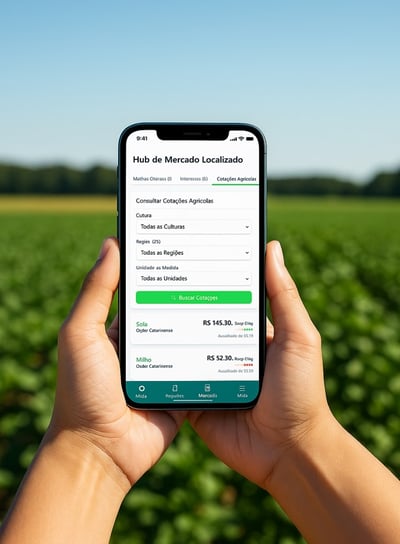

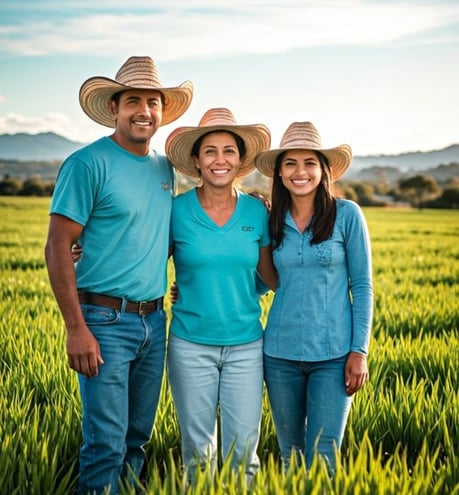

Empathic Immersion: Exploring the Reality of Santa Catarina's Farmers.
With the initial data in hand, an ethnographic immersion was conducted with family farmers from Santa Catarina to understand their challenges, behaviors, and needs for the development of a digital solution for the sector. This research revealed key insights into the existing barriers and opportunities for adopting digital technologies in the rural context.
Secondary Data Analysis: Investigation of socioeconomic studies and reports on family farming in Santa Catarina (focusing on education level, average property size, main crops, income, and access to and use of technologies).
Methods:
Persona: Creation of detailed archetypes, such as "Ricardo" (an experienced farmer, focused on selling traditional crops and wary of complex technologies) and "Mariana" (younger, engaged in management, interested in sustainable practices, and more open to technology), to humanize the data and guide design decisions.
User Journey Mapping: Delineating the current journeys for key tasks (e.g., "Crop Planning and Sales," "Searching for Technical Information"), identifying friction points, frustrations, and opportunities for improvement.
Key Findings:
The research identified that family farmers in Santa Catarina face a complex combination of operational, technological, and commercial challenges that directly impact their competitiveness and sustainability. Operationally, they are characterized by informal, intuition-based management, scale limitations due to the small size of their properties, a succession crisis worsened by the rural exodus of young people, and a lack of knowledge in business management.
In the technological aspect, a relevant paradox exists: although 50% of farmers use the internet and view technology positively, poor connectivity and the "invisible workload" of learning new tools create a disconnect between perceived value and practical use.
Commercially, they show a tendency to produce based on existing knowledge rather than market demand, face constant price volatility, lack collective organization for negotiation, and experience a tension between the desire for better commercial engagement and the fear of market complexities and risks. Among the main challenges, we can highlight the following:
Current Challenges for Santa Catarina's Family Farmers
Price Uncertainty: Many producers lose income due to a lack of access to clear market information. Price fluctuation makes financial planning difficult.
Distribution Challenges: Limited access to distribution channels prevents products from reaching consumers efficiently, leading to losses and waste.
Digital Isolation: The lack of connection or unstable internet in rural areas excludes farmers from the digital world, limiting their access to crucial data and opportunities.
Identified Opportunities:
Despite the challenges, the research revealed a significant openness to innovation, with a growing interest in new technologies and sustainable practices. There is a recognized potential for social media and applications to bring producers and consumers closer, creating more direct sales channels. Particularly relevant is the finding that farmers often face the challenges of digital adoption in isolation, indicating a demand for solutions that promote community and shared learning.
Implications for Product Design: The research findings point to the need for solutions that prioritize offline functionality due to limited connectivity, intuitive interfaces, and immediate benefits that justify the learning curve. These guidelines directly informed the design decisions and proposed features for the developed digital solution.
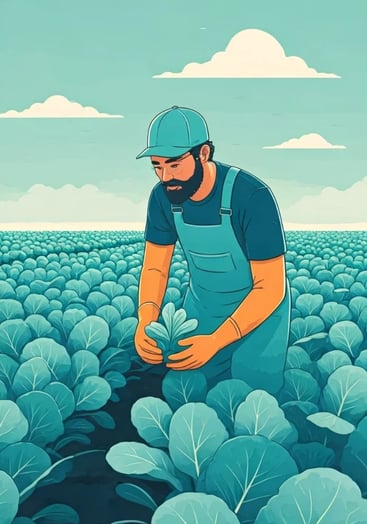

MVP Definition: Focusing on Essentials for Immediate Impact
With a more robust understanding of the user and their context, the definition phase focused on translating the research insights into a clear and actionable MVP scope.
Methods:
Problem Statements (Point of View - POV): A precise articulation of core user needs and the insights that support them (e.g., "José needs a simple and reliable way to access market prices and buyers because the current lack of transparency limits his income").
"How Might We" (HMW) Questions: Generating thought-provoking questions to open up the range of possible solutions (e.g., "How might we provide market information in an understandable way, even with low connectivity?").
Feature Prioritization: Using an Impact vs. Effort matrix to select the features to include in the MVP, ensuring the delivery of essential value right from the start.
The strategic decisions for the scope of the Minimum Viable Product (MVP) focus on three central pillars: the creation of a localized market hub to solve commercialization pain points and access to price information; the implementation of a simplified farming log that facilitates basic property management with an emphasis on usability and intuitive data entry; and the development of a robust offline capability with smart synchronization, ensuring the tool's functionality in the field, even with unstable or non-existent internet connections.
Usability Testing: Validating the Solution
Usability tests were crucial for validating the solution directly with family farmers from Santa Catarina, using a high-fidelity prototype. The main objective was to observe user interaction with the design, learn from their experiences, and iterate on the proposal to refine the product's usability.
To conduct the tests, methods such as moderated usability sessions were employed, carried out individually with farmers who aligned with the defined personas, in their own environments to simulate the real context of use. Participants were encouraged to verbalize their thoughts and difficulties through the "Think-Aloud" protocol while they executed realistic task scenarios, such as recording a harvest or checking prices. Data collection included metrics such as task completion success rate, time spent, number of errors, and subjective satisfaction.
Based on the collected feedback, several iteration decisions were made to enhance the user experience. Forms considered confusing or extensive were simplified, menus and navigation elements were reorganized to facilitate feature discovery, the terminology and instructions were adjusted for greater clarity, and the visual feedback for the offline data synchronization process was improved.
The key learnings confirmed the positive reception of the simple and direct design approach. Specific friction points were identified in the user experience that were not evident internally but had a significant impact.
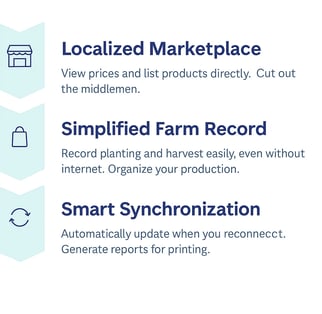

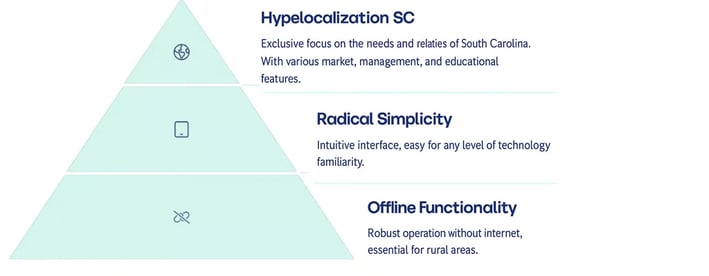

Key Design Decisions: After the ideation and prototyping phase, it was possible to define the core flows and features of the MVP, prioritizing a mobile-first approach due to smartphone penetration and the nature of fieldwork. The user interface was centered on simplicity, adopting large, clear buttons, direct language without technical jargon, universally understandable iconography, and immediate visual feedback for each action.
Task flows were optimized to minimize the number of steps required to complete essential activities, reducing cognitive load and interaction time, while the design was explicitly conceived for offline functionality, with clear screens and messages indicating connectivity status and the queuing of data for later synchronization.
Launching the MVP and Charting the Future for CampoConecta SC
Focused Pilot Program: Start with a small, controlled group of family farmers from Santa Catarina who fit the developed personas. This allows for close monitoring and the collection of detailed feedback. Consider an "early adopter" audience of 5-10% of the total estimated audience.
Strategic Partnerships: Collaborate with local agricultural organizations, such as cooperatives, producer associations, or Epagri itself. These partnerships can be crucial for recruiting participants for the pilot, for publicizing the tool, and for building credibility within the agricultural community. CEPAGRO, with its experience on platforms like LiteFarm, could also be a valuable partner.
Continuous Feedback Collection Plan: Establish clear channels for pilot users to report problems, suggest improvements, and share their experiences. This can include in-app forms, dedicated WhatsApp groups, or periodic visits.
Accessible Technical Support: Offer responsive technical support in accessible language to assist farmers during the initial adoption phase, especially those with less technological familiarity.
The launch of the MVP is not the end of the design process, but the beginning of a new phase of learning and iteration in the real world. Some important considerations for the pilot launch:
Key Learnings: The main learnings from the project converged on the critical need for a deeply empathetic and contextualized design. We discovered that, beyond functionality, building trust through clear feedback and ensuring the tool is an ally, not a burden, are decisive factors.
Reaching the farmer audience also proved to be a challenge. There was an initial refusal rate of approximately 60%. Some farmers who were contacted expressed distrust or simply stated they didn't have time to "spend an hour on the computer." Scheduling needed to be flexible, often taking place early in the morning or late in the afternoon.
Some participants who agreed to join already had a comfort level with technology slightly higher than the average for their segment, which may have masked usability problems that would affect even less digitized users. A more rigorous screening process and conducting new rounds of testing would likely give us more reliable results regarding the target audience.
The project's development also highlighted the critical importance of resisting the temptation of "feature creep" (the excessive accumulation of features) and maintaining a focus on the most essential pain points for the MVP. Meanwhile, the clear definition of the problem and the target audience proved to be fundamental both for aligning the team internally and for justifying scope choices to the project's stakeholders.
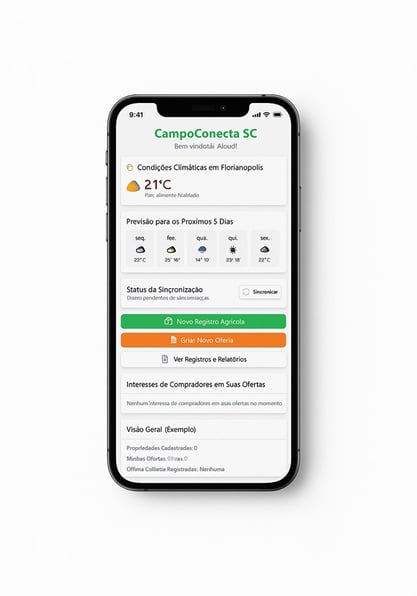

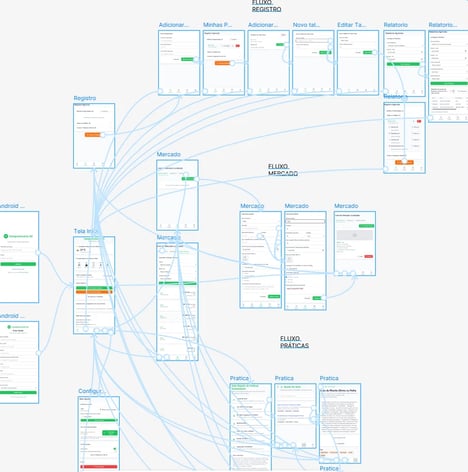

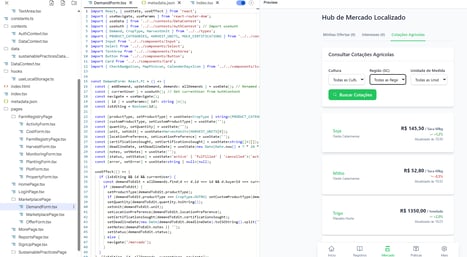

MVP in Development
